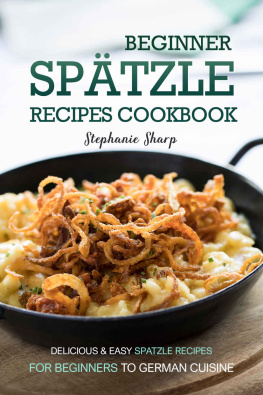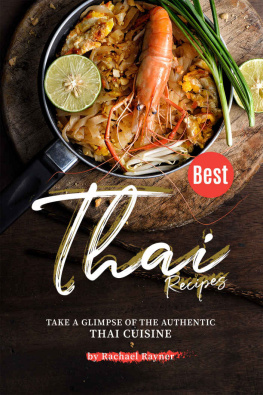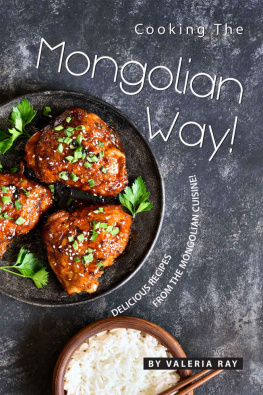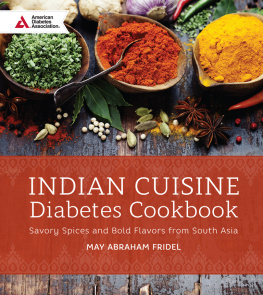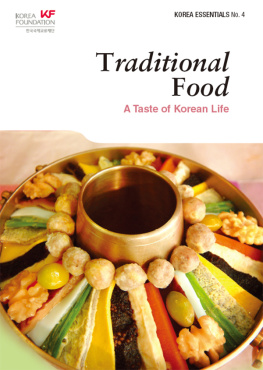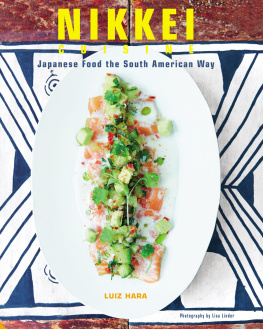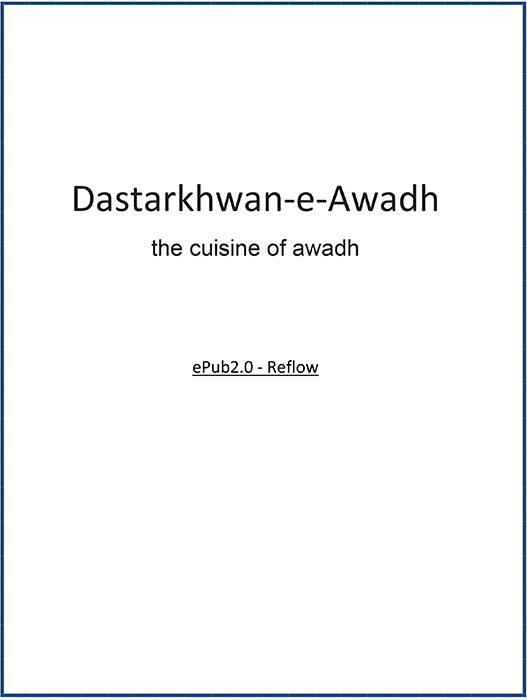

Dedicated to the people of Lucknow and Barabanki
Contents
And the earth he appointed for
his creatures
Wherein are fruits and sheathed
Palm trees,
husked grain scented herb.
Which of these favours of your Lord
that ye deny?
Quran 55:10-3
F ood occupies the highest position in most cultures and religions. The most unique example of spiritualism is manifested in a physical form the evidence of the bounties of God and human motivation for existence.
Pahile Taam Badahu Kalaam First food then communication is the evidence of its supreme position. Considerable spirituality revolves around food, which is blessed and elevated to the position of Nematthe special creations of God for His most special creation, the human being. This opens up a different dimension to the subject of food: what, how much, which meal is blessed, when, where and howand how much and most importantly when to negate foodfasting, dieting, etc.
From the finer layers of all this is born the culture of food, the evolution of the Zaiqa, the taste and it pervades the entire milieu, from festivities to celebrations, from intimate nashishts to public mahfils. The aroma rises from smoke-filled kitchens to elaborate dastarkhwans where words and images are as cleverly woven, as condiments and herbs where the same meat tells a different story through its varied Zaiqa. Yet, food is an intimate feeling of loving care and warmth of human relationships. It is the most regular and the most consistent form of reinforcing tenderness.
Food in Awadh had evolved to become a total experience of an occasionfragrant, visually appealing and almost magical and truly such is the scope of this bookextremely detailed, well researched and evocative, capturing the ambience of a bygone era perfectly. It brings to life a number of recipes and techniques that had gone into oblivion, and with it a new interest in this rich form of cuisine. I t opens an enormous future for the refined international palate, the art of cooking and above all the promotion of Lucknowbecause there is no substitute for enjoying this fare other than in its own milieu. It ranges from simple to the rich, exotic to the earthy, and for the gourmet it opens up a vast canvas to create and balance a wide range of menus to suit every possible taste to leave an everlasting impression.
Sunset along the river Gomti

T he very mention of Lucknow, which was the seat of Awadh culture, brings to mind the tradition of pehle aap (after you), the language dripping with politeness and the lifestyle of the nawabs. But what appeals the most is the cuisine of Awadh, which, in some ways. was a culmination of all that was best in art, culture and science.
The erstwhile province of Awadh was famous for its high standards of gastronomic etiquette. This culture is still found preserved in the sanctum sanctorum of the erstwhile landed aristocracy of Lucknow and a few adjoining districts that formed part of Awadh; and of course the famous bawarchis (cooks) who, with tremendous discipline, bordering on religious fervour, still follow the traditional style of cooking, handed down to them by their ancestors. Credit goes to them for not compromising on the quality of the food prepared by them despite pressures constraints of time and money.
The authors aim to introduce the characteristic tastes and flavours of this region to readers with the hope that the authentic cuisine from Awadh will be recreated in todays kitchens to be savoured at the table.
In this age of frozen and fast foods, it is reassuring to find that in the kitchens of some of the erstwhile nawabs and taluqdars, life is still in tune with the natural rhythms of the seasonsand food has not basically changed for over generations. With an emphasis on traditional food that truly relies on naturally fresh ingredients, we return to an age before convenience food, ironically complicated our eating habits.
Blessed with a rich and varied cultural heritage, India is home to a wide variety of foods of different regions reflecting geographical and cultural differences, varieties in local produce, traditions, temperament and tempo. Yet, behind this remarkable diversity there is one thing that unites them: hospitality and love. Concern for the quality of food and the manner in which one partakes of it is important. It is usual in this region for three generations to sit together around the Dastarkhwan (dining spread) to enjoy their meals.
Often one reads an irresistible recipe only to learn that it is not possible to reproduce it outside the narrow confines of its origin. The unavailability of ingredients is a common problem while discussing original recipes. However, we are in a particularly privileged position, because barring a few condiments the rest are easily available in any part of the world.
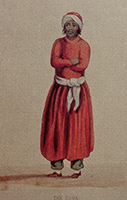
'The Cook': A sketch by an Englishwoman, 1838, from the book, The King of Oudh, his Brother and Attendants
Another serious difficulty, which has in fact resulted in the virtual extinction of some of the finest dishes, is the abundant use of ghee or clarified butter and spices, besides the long cooking time required. In order to suit the palate of the present generation, the recipes have been meticulously tried and tested several times with a toning down of the rich ingredients wherever possible. Both the cooking time and the method have also been modified and adapted to the modern kitchen without compromising on the final taste and the flavour of the dishes. Though we still hold that sahaj pakey so meetha hoi (that which is cooked by the slow method is tastier), we have adapted most of the recipes to suit todays kitchens.
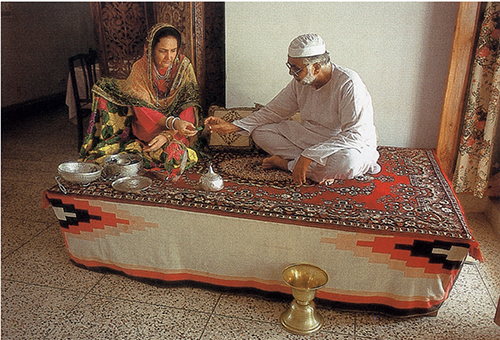
Nawab Chowdhry Habib and his begum
To gather information and pictures for this book we have traversed the region of Awadh. We met the purdahnashin (veiled) begums, talked with bawarchis and rakabdars (master cooks). We met housewives and discussed and exchanged recipes, shared many a meal with families and new friends. We talked to restaurateurs and chefs and people in the villages and small towns. We dined in the famed mango orchards of Awadh. Through it all, from the feasts and festivals, through the variety of exquisite food savoured, one fact clearly emerges: Awadh cuisine is very much a living force, always playing an integral role in the life of the people of this region. We sincerely hope that this attempt at the demystification of the culture and the cuisine of Awadh will be able to rekindle the romance of Shaam-e-Awadh.
Sangeeta Bhatnagar
R.K. Saxena
l ndia is that unique land where the past merges with the present, Gods walk among men, and truth coexists with myth. Nowhere is this more true than in the erstwhile kingdom of Awadh, now represented by the area in and around Lucknow, the capital of the state of Uttar Pradesh. It forms the centre of that vast plain which has been, for centuries, the peculiar site of Indian civilization. It stretches from the Ganga to the Himalayas, and is about equidistant from Delhi on one side and the extreme east of Bihar on the other.
Next page

